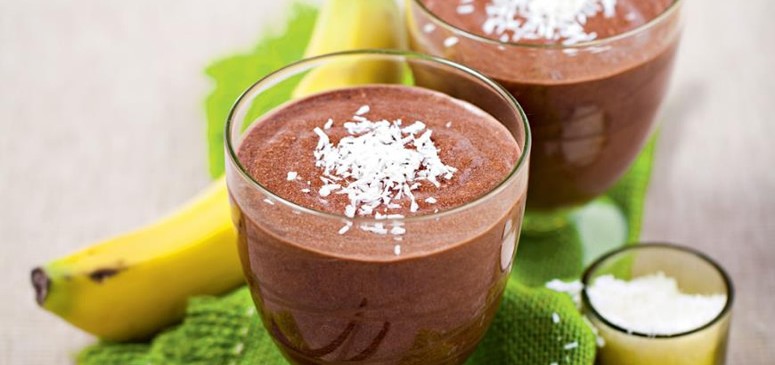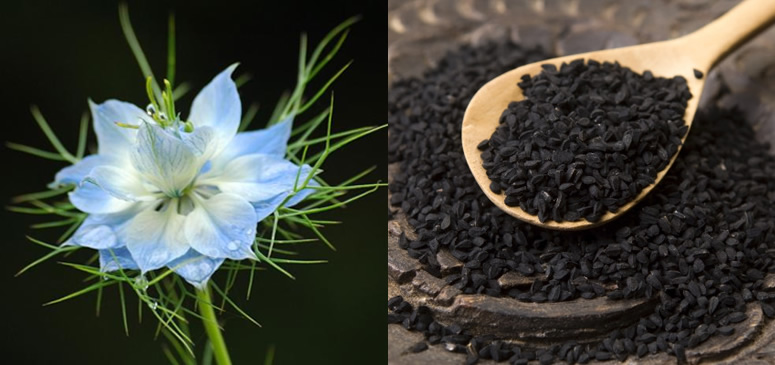This post has appeared in my head spontaneously, but not incidentally. Animal and vegetative protein – how to understand them and which one is better?
Winter is outside, so it’s a good time to bring body well form and to clean it from the inside. Having bought remarkable “green cocktail”, I thought of that it would be also quite good to order protein cocktail (in case there won’t be “healthy food” for a dinner, however the useful protein is necessary for evening time), which may completely replace full-fledged meals. I went on iherb and saw there mountains of different proteins… And the most popular among vegan people is soy protein, but according to opinion of experts it is hard to acquire. Moreover, soy cause allergy. And what then to take? Let’s think together because the question is highly interesting for ones who want to correct meals and weight.
What is protein and what we need it for?
Primitive answer is for the same we eat meat and dairy products. Proteins are long chains of amino acids, which are connected by a peptide bond. Along with water, protein is the most widespread substance in our bodies and the main part of protoplasm of each body cell. Besides, there is not the one type of the protein, but many, and each have its purpose.
Different proteins may:
- be the main structural unit of face skin, hair or nails (it “builds” collagen and elastin, and its deficit threatens sagging skin of face and body)
- help to digest producing digestive enzymes
- play important role in the immune system as immunoglobulins
- be a construction material for muscules
- be the main element in synthesis of energy
- place a role of peptide hormones, to give signals to cells, which product collagen and elastin.
- transport oxygen through the blood in the form of hemoglobin
Curiously, when we eat protein food organism doesn’t use it instantly and as it is, but splits it into amino acids, then soaks them up from digestive tract and after that, with the help of genetic elements again gather amino acids to the certain proteins necessary for one of functions are written above.
Important that some amino acids are synthesized in the body, but not all. Most important for our organism can come only with food! That is why they should be obligatory in our diet for healthy life.

10 essential amino acids, which should to come to organism with food:
- Phenylalanine, Valine, Tryptophan, Threonine, Isoleucine, Methionine, Histidine, Arginine, Leucine, Lysine
If our diet has chronic deficiency in any of these amino acids, production of normal protein is being stopped.
For instance, it you are vegan and take only rice protein (it has low concentration of Lysine) the balance of amino acids in your organism will have been broken with time and it won’t be able to build different proteins and it surely will negatively influence on health.
Important! We must get with food different types of proteins to make possible to fill deficiency of amino acids from one source to another. Deficit of amino acids cause ammonia release from liver and increase in production of uric acid that is fraught with various health problems.
Well, protein is essential nutrient equal to carbohydrates, fats, vitamins, minerals, water and oxygen. Etymology of protein comes from greek word “prota” that means “primary”, because it has been used by our organism for creation, maintenance and restoration of tissues. The organism takes so much as needs and the rest transforms into energy (that’s why sportsmen eat or drink protein before trainings).
The structure of protein is very important too!
Protein came with food have not the same digestibility. They need different amount of time. To understand this, we need to notice how amino acids in our organism are united to certain proteins.
There are about 20 amino acids from which proteins have been gathering. Each protein consists of these 20 amino acids, which are taken in absolutely different schemes and quantities for each type of protein.
Each protein has unique sequence of amino acids are coded in a gene. Thus, most of proteins are rather big molecules containing up to thousands of amino acids weaved into chains, bunches of chains and even in 3-dimensional structures!
Structure of protein influence how easily in may be separated into amino acids during digestion. In other words, it plays an important role in protein’s tendency to stimulate allergic reactions.
For instance, big molecules of cow’s protein are split with great difficulty and often cause allergy.

The definition of bioavailability of protein for optimization of our food
Food protein (from animals or vegetables) comes to us with different fats and carbohydrates. In most cases this is not a problem, sure, but often these “followers” play important role in digestibility of protein. For example, some nutrients can suppress release of gastric acid, necessary for splitting and digestion of protein or just cover protein so enzymes and gastric juice cannot rich him (people who take collagen in tablets know it should be done separately from meals and on empty stomach!)
Here we can make a conclusion that on bioavailability of protein influence 3 factors:
- variety of amino acids in protein structure or in the combination of proteins taken a day.
Type and variety of amino acids in structure of protein is one of the most important factors we must pay attention on while choosing certain protein. Here also is important to know bioavailability of protein increases directly proportionally to amount of amino acids with branched chain (BCCAs).
BCCA – is a unique amino acidic structure which includes Leucine, Isoleucine and Valine. These three amino acids are special because process of metabolism occurs in muscles not in liver unlike other ones. The more BCCA in protein the higher its bioavailability.
- Structure and size of protein’s molecule (so, big and dense soy, corn and milk proteins are more hard to split that is why they are often marked as allergic)
- Following protein substances are capable to complicate its splitting
Therefore the use of qualitative protein in special cocktail, which has already considers the structure of molecules, bioavailability, necessary amount of amino acids with branched chain and the absence of “harmful followers” is very useful for the biggest and better “delivery” right protein to our organism. Actually, at the nutrient availability of 90% organism may direct protein not only to muscles and different organs, but to update skin by forming new fibers of collagen and elastin from arrived amino acids.
So how should we take the protein to optimize its nutrient availability?
From all said above we may sum up that not all proteins are acquired, not every type has optimal structure and not each protein has the set of amino acids we need. There is a little problem! It means, we should think how to optimize taking and quality of protein to make well not only the body but collagen/elastin in the face skin!
We should eat more than one type of protein
We cannot take only one type because either there will be the lack of some important amino acids or even protein has the whole set it might be hard to split because of its big molecular mass (soy or cow’s protein). Egg’s protein is balanced; however cause abdominal distension, gases and spasm.
Many people think convenience and simplicity of animal protein are much better than vegetable protein. Nevertheless, despite animal protein has more full set of amino acids, its nutrient availability is lower: so, beef has just 20% of useful protein, otherwise Spirulina and Chlorella on average has 75-80% and if we separate protein from yellow peas and rice we will count up to 90% of useful protein! It turns everything out into “protein world” is so unambiguously!
And thus we come to main part of the post – we will analyze all the types of proteins, their pros and cons and display the most suitable, bioavailable, acquired and useful proteins and protein cocktails!
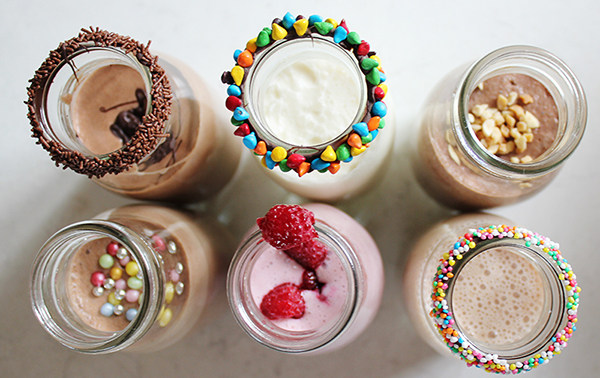
Comparison of animal and vegetable proteins
One of the important factors of bioavailability of protein is the type and relative amount of amino acids presented in certain protein. Our body has the capability to synthesize some of amino acids it needs for the building of proteins, but there are 10 essential amino acids we have to eat because the body cannot produce it.
The majority of animal proteins contain all essential amino acids in enough, but not all of them will be acquired and they may cause the allergy. Most of grains and vegetables can have all essential amino acids, but their amount in protein is much less than in animal protein, especially it concerns amino acids with the branched chain BCCA. And yet, it is easy to compensate by industrial way getting highly concentrated vegetable proteins.
So let’s consider main advantages and disadvantages of animal and vegetable proteins.
Beef protein
Pros:
- Has all the essential amino acids
- It is mostly hypoallergenic
Cons:
- From the whole meat protein only 20% are useful and acquired
- Meat protein is not rich of nutrients
- Brings to organism enough amount of kilocalories
- Mostly we eat nonorganic beef had not raised with Alpine herbs, but grown with help of antibiotics, gormons, pesticides and with abnormal proportion of Omega 6 to Omega 3 fatty acids
Approximately from 100 g of beef we will get 23 g of protein and 15 g fat. It has biological value in 73.
Pork protein
Pros:
- Has all the essential amino acids
- Mostly hypoallergenic
- Has better acquiring than beef
Cons:
- High concentration of antibiotics
Poultry protein
Pros:
- Cheaper alternative of beef with the same list of the amino acids
- The meat is less fatty, dietary
Cons:
- The meat from poultry farms also has antibiotics, arsenic, hormones and cancer chicken tumor – leukosis
From 100 g a fast turkey we get 27 g of protein and 3 g of fat. It has biological value in 80.
Fish protein
Pros:
- High concentration of qualitative protein, without carbohydrates and low-saturated fats
- Fish oil has very useful Omega 3 acids
Cons:
- The fresh-caught fish often has high concentration of Hydrargyrum
- Grown on the farm fish often has high levels of antibiotics and dioxin
From 100 g of the fish we get 27 g of the protein and 5 g of the fat. Is has biological value in 81.
Milk protein
American National University of Diabetes, Gastrointestinal and Kidney diseases consider that from 30 till 50 millions of Americans suffer from lactose intolerance. Its symptoms are gases, gastric spasms and diarrhea and so on. Also, great amount of people suffer from an allergy on milk protein. Often asthma and impassability of nasal bosoms are concerned with intolerance of milk food.
The hardest for digestion are bull anti-genes (substances causing immune reaction) this is a casein that is the reason for many allergies! That is why try to avoid exactly cow’s milk because it, besides bad splitting, also forms slime in intestines, where yeast begin to propagate on that in turn causes thrush and spots on the skin.
⇒ choose goat or sheep milk (it is better acquired)
⇒ better eat sour-milk products from goat/sheep milk (cheese, yoghurt)
⇒ better take not pasteurized milk (there enzymes remained, which split the milk protein in our stomach)
1 glass of milk gives 8-9 g of protein and 5-10 g of fat. Biological value is 80-90.
Whey protein
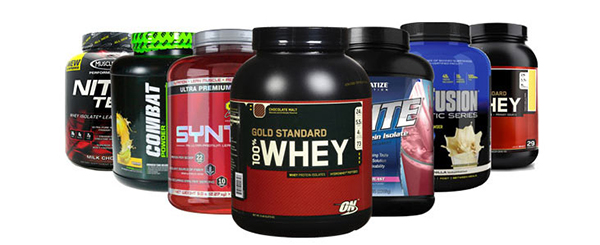
Pros:
When business reaches to protein cocktails nowadays whey protein is great. It has removed on background milk, egg and soy protein. Why?
- It has extremely high biological value (90-100 – whey protein and 100-150 – serumal isolate)
- It has a big concentration of amino acids BCAA thus is fastly acquired by the organism of human.
Cons:
- Unfortunately, this protein is very allergic.
And problem not even in lactose or casein, which is usually removed from whey of its level is significantly decreased. It is represented beta-lactoglobulin, alpha-lactoglobulin and bull serumal albumine; all of them are highly allergic.
- Whey has cholesterol much higher than admissible.
Moreover, whey protein same as whole cow’s milk may form slime, fermentation, abdominal distension and yeast propagation. According to the world’s researches, 60-70% of people suffer from it.
- Milk protein and isolate often promote the development of toxicosis of intestines.
Egg protein
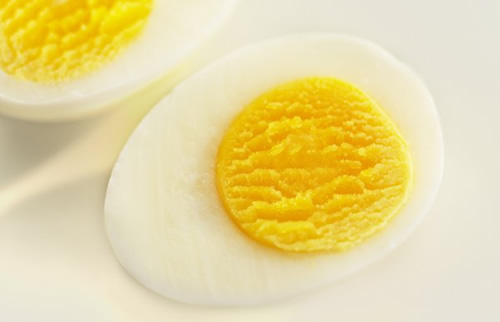
Pros:
- Has rather full set of amino acids
Cons:
- The most allergic among all proteins
- Has high concentration of Serum that leads to formation of gases in intestines
Soy protein
Here I don’t want to break on pros and cons. I want to speak of cons because in spite of them soy protein in large quantities is made and on sale… Just look on ranking of soy proteins on iherb – it reads off scale… Everybody buy it, rejoice and recommend…
However, soy protein is NOT effective replacement of animal protein! It contains huge amount of allergens, because some from 28 proteins are presented in soy, bond with our IgE antibodies and excite immune reaction! And what scares: the much time we eat soy protein the much possibility of allergy effect in the future.
Soy protein blocks digestion of important minerals as Calcium. In the end I will say that it contains powerful inhibitor of ferments, which block effect of trypsin and other ferments necessary for protein’s digestion. Because of that, after drinking soy cocktail in stomach is increased volume of gases in addition to stimulation of pathologic states of pancreas.
Protein of hemp

Pros:
Hemp protein has a range of unique features:
- 65% of protein from general consistence in hemp has absolutely bioavailable structure for human organism
- In essence reminds globulin, found in plasma of man, which is highly important for maintenance of healthy immune system
- Has a unique capability to stimulate production of antibodies against different viruses and bacteria
- Hypoallergenic
Cons:
- Hemp seed contain just 30-50% of protein, which supports mostly immune system than building of different tissues of organism
Proteins of grain and bean crops (buckwheat, millet, haricot etc)
Pros:
- Grain and crops contain all essential amino acids and may serve as basis for vegetarian diet.
Cons:
- Have tendency to be unbalanced in proportion of amino acids in protein
This means we must eat them more than animal protein to get equal amount of protein.
- Don’t have in the structure enough amino acid with branched chain (BCCA)
- Are not enough for using as protein supplement for sportsmen, growing thin people and ones who have just recovered after hard and long illness.
Protein of spirulina, hlorella and blue-green alga
Spirulina, hlorella and blue-green alga are ones of the greatest super-products and the best vegetable proteins

Pros:
- Up to 70% of good protein in its natural state. It is the higher indicator from all types of raw food.
- In contrast to other types of protein, spirulina is acquired on 85-95%
- It has in its cellular walls cellulose that simplifies digestion of cell’s protein
- Amino acids of spirulina are absorbed by the organism almost instantly after eating it.
Cons:
- They are very expensive for sportsmen to get from 70 till 200 g of protein
- Taste is “between seaweed and grass”
- Spirulina may cause allergy (it is often concerned with that all cheap seaweed may have toxins)
Rice protein and protein of yellow peas
Combining of rice and peas sounds rather “untasty” for many people. And really, rice protein reminds the taste of chalk or lime. But, however, if to make it qualitatively this mix provides with one of the best proteins by criteria of bioavailability.
Protein from brown rice
Standard boiled rice
Standard boiled rice has only 5-7% of protein. To get concentrated rice protein brown rice is crushed in flour, than mix with water. After that natural enzymes are added to separate carbohydrates and protein fibers from pure protein. Important to prevent damage of amino acids and save activity of enzymes, thus low temperature must be kept (exactly at high temperatures of pasteurization of cow’s milk enzymes have been deleted from it, which split cow’s protein and that’s why cow’s milk it is badly acquired)

Pros:
- After four hours our organism splits and soaks up about 86% of rice protein (unlike for soy only 57%)
- This protein hypoallergenic and it is easily acquired
- High level of sulfur-containing amino acids (Methionine and Cysteine) make skin and hair healthier and improves antioxidatic protection of cells
- It has biological activity in 70-80 and general absorption of 98%
Cons:
- It has low concentraion of lysine
Protein from yellow peas

Pros:
- It has very pleasant taste (soft and sweet)
- High concentration of lysine
- Hypoallergenic
- It has concentrated natural protein made on low temperatures same as rice protein
Cons:
- low content of sulfur-containing amino acids (Cysteine and Methionine)
Conclusion: according to the information above, rice protein has a little of lysine, but a lot of sulfur-containing amino acids. Peas protein, in contrast, contains much lysine and a little of sulfur. One by one they are not the most favorable variants, but if combine them we will have hypoallergenic, bioavailable and protein competing by biological value with milk and egg protein and thus acquired on 90%! At the same time, amino acidic profile BCCA is it is only a little less than in that “couple” unlike whey protein, they except all possible allergic reactions (whey has 8% of leucine, 6% of isoleucine and 5% of valine; “rice+peas” has 7% of leucine, 4% of isoleucine and 4% of valine). They are really the best proteins.
So which protein is better?
Comprehended all this information about “which protein is better” I came to the conclusion that animal protein I get anyway from meals (chicken breast). Possible it is not enough because mostly I eat fresh vegetables and greens. When I understood I want to replace evening chicken with protein cocktail to lower weight and do not ruin health I decided that for me optimum is not one protein but few “rolled into one”. I gave preference to a fine and combination “brown rice+yellow peas”, hemp and seaweed like optimal mix of best vegetable proteins. Now has appeared protein from seeds of chia, quinoa, amaranth and other “pleasures”, but they are usually added to main source of protein that sure is welcomed.
Best protein cocktails
Here I have chosen from all huge assortment on iHerb the best protein cocktails proceeding from bioavailability, hypoallergenicities, full value of amino acidic structure and size of molecule of protein.
- Pure Advantage, Pure Vegan, Meal Replacement with Multi-GuarD, Vanilla, 1.42 lbs (645 g) — 28 $ (SUPER! Mix rice+peas, fiber flax, chia, quinoa, amaranth etc for better digestion, vitamins, super-berries, enzymes, carotenoids, antioxidants and many other things and here we get 26 g on one portion!)
- MRM, Veggie Elite, Performance Protein, Vanilla Bean, 2.2 lbs (1,020 g) — 32,99 $ (classical variant for month! Rice+peas and stevia instead of sugar)
- MRM, Veggie Meal Replacement, Vanilla Bean, 3 lbs (1,361 g) — 34,30 $ (just amazing cocktail rice+peas+linseed with addition of vitamins, Omega 3 of unsaturated acids, probiotics and Rice+peas and stevia instead of sugar with fruit and berry extracts, on stevia! 1 month)
- Sprout Living, Epic Protein, Plant-Based, Green Kingdom, 1 kg (1,000 g) — 52,25 $ (perfect by structure protein cocktail with “green cocktail” in a duet for a month).
- Sprout Living, Epic Protein Plant-Based, Original, 1 lb (454 g) — 23,99 $ (half-month classical protein cocktail, balanced)
- Bluebonnet Nutrition, Organic, Super Earth, Veggie Protein, Vanilla Chai, 1 lb (468 g) — 24,76 $ (good cocktail from good manufacturer)
- Life Time, Life’s Basics, Plant Protein Mix, Unsweetened, Natural Vanilla Flavor, 16.24 oz (460 g) — 25,74 $ (remarkable protein mix sugar free, structure is perfect. Line Life Time I liked so much!)
- Life Time, mix of vegetable proteins from Life’s Basics, with greens (562.4 g) — 30,72 $ (proteins+”green cocktail”)
- Life Time, Life’s Basics, Plant Protein Mix, with 5-Fruit Blend, 20.69 oz (586.5 g) — 34,20 $ (proteins+super-fruit usefulness)
- Life Time, Life’s Basics, mix of vegetable proteins with natural taste of chocolate (555 g) — 25,98 $
- Jarrow Formulas, optimal vegetable protein, 19 ounces (540 g) powder — 15,37 $ (inexpensive, good mix of rice, peas and hemp, seeds of a chia, hlorell and stevia)
- Green Foods Corporation, True Vitality, Plant Protein Shake with DHA, Unflavored, (644 g) — 21,58 $ great mix of rice, peas, hemp and spirulina, enriched vitamins and Omega 3!)
- Vega, Protein Smoothie, Viva Vanilla Flavor, 9.3 oz (264 g) — 17,26 $ Vega has very good proteins.
- Paradise Herbs, ORAC-Energy, Protein & Greens, Original Unflavored, 16 oz (454 g) – 27.49 $ Protein+greenery+Immune-Beta glucan mushrooms+probiotic blend+antioxidants+adaptogen+liver cleansing+berry blend

